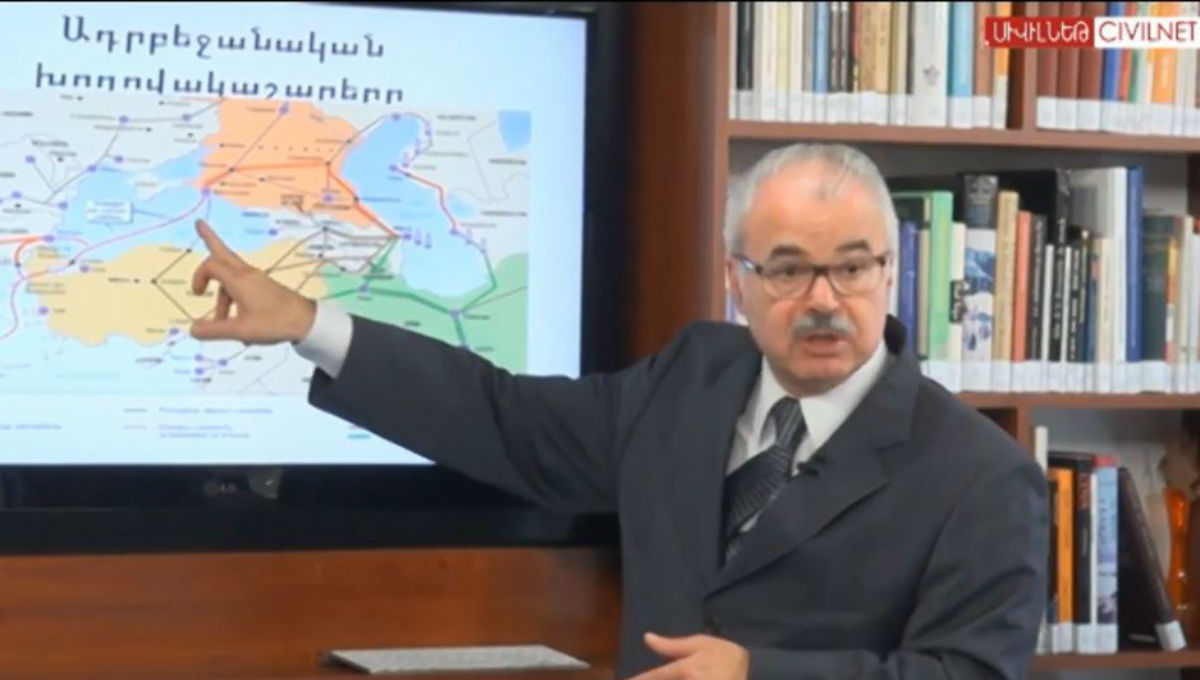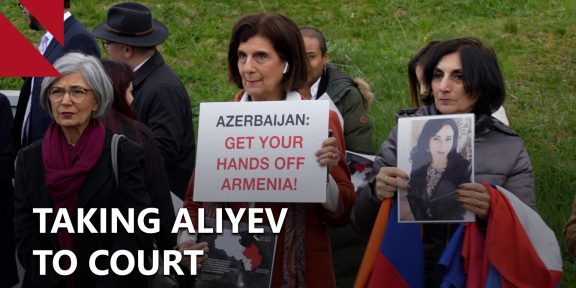 By Pierre Terzian
By Pierre Terzian
The breaking of oil-sector cooperation between Saudi Arabia and Russia, which occurred in Vienna on March 6, was the result of political calculation on the Russian side, and of resentment and psychological clumsiness in the case of the Saudis. The two countries were unable to reach an agreement in the days before the Vienna meeting. Saudi Arabia was demanding a substantial further production cut, while Russia just wanted to prolong the production cuts – decided in December 2019 and applicable until March 31, 2020 – for another three months. The Saudis believe that the impact of the coronavirus crisis on the oil market is very serious and requires all appropriate measures to be taken, while the Russians argue that the uncertainties surrounding the epidemic do not yet justify any drastic decisions and that one should wait and see before going any further. So much for the oil aspect.
The Russian decision not to make further production cuts at this time was made during a meeting chaired by Vladimir Putin in Moscow on March 1. Russian Minister of Energy Alexander Novak passed it to his Saudi counterpart, Prince Abdulaziz bin Salman, in Vienna on March 4. Their meeting ended without an agreement being reached. Under these circumstances, when OPEC ministers issued a statement on the following day (March 5), giving very precise quantified recommendations for the meeting of OPEC+ ministers scheduled for the following day, it became clear that failure was almost certain.
An OPEC conference press release that “recommends” quantified production targets to an OPEC+ conference, which is itself supposed to decide, is unprecedented. So far, even when a preliminary agreement has been reached with the Russians, OPEC press releases prior to OPEC+ meetings have never included any numbers, and have simply analyzed the market situation. Quantification decisions were left to the OPEC+ conference of ministers, and thus appeared to be made jointly. It was therefore more than likely that the publication of quantified recommendations, on March 5, would be perceived by the Russians as impolite, at the very least. Why?
 First of all, let’s look at the facts. On March 5, OPEC ministers recommended that the current OPEC+ production cuts (1.7 million b/d) be extended until the end of 2020 (instead of March 31), with an additional reduction of 1.5 million b/d (the figure circulating previously was 1 million b/d) until June 30, 2020. This proposal seems to have been rejected, within only a few hours, by the Crown Prince of the Wahhabi kingdom, Mohammad bin Salman (MBS). He is said to have requested that the additional production reduction of 1.5 million b/d should also be applicable until the end of 2020. OPEC ministers therefore had to meet again – this time at a hastily-convened informal conference – to adopt MBS’ formula via a short statement. The Russians were faced with a “take it or leave it” proposal; the word “ultimatum” then began to circulate. By acting in this way, the Saudis made a psychological mistake.
First of all, let’s look at the facts. On March 5, OPEC ministers recommended that the current OPEC+ production cuts (1.7 million b/d) be extended until the end of 2020 (instead of March 31), with an additional reduction of 1.5 million b/d (the figure circulating previously was 1 million b/d) until June 30, 2020. This proposal seems to have been rejected, within only a few hours, by the Crown Prince of the Wahhabi kingdom, Mohammad bin Salman (MBS). He is said to have requested that the additional production reduction of 1.5 million b/d should also be applicable until the end of 2020. OPEC ministers therefore had to meet again – this time at a hastily-convened informal conference – to adopt MBS’ formula via a short statement. The Russians were faced with a “take it or leave it” proposal; the word “ultimatum” then began to circulate. By acting in this way, the Saudis made a psychological mistake.
As their entire history has shown, the Russians will not yield to an ultimatum. They will fight, even if they sometimes have to pay a very heavy price. It was therefore hardly surprising that they refused to comply, on March 6, with what they probably viewed as a command, despite the efforts of Saudi Minister of Energy, Prince Abdulaziz bin Salman (MBS’ halfbrother), who spent five hours that day talking to his Russian counterpart, Alexandre Novak. The Russian Minister had very strict instructions from Vladimir Putin and couldn’t go beyond the limits decided by his boss. Could things have been different if MBS had spoken to Putin? Why didn’t he do so? The answer to these questions may never be known. MBS’ inflexibility may be an expression of Saudi anger against the Russians, who have so far failed to really cut their production despite the commitments made during OPEC+ meetings. Their output rose by 1% in 2019, with most of the increase attributable to Rosneft, whose CEO, Igor Sechin – a very close Putin ally – is notoriously opposed to output reduction agreements with OPEC.
Russia’s position
For Russia, the political situation has changed between the last two OPEC+ meetings. Two weeks after the one held on December 6, 2019 (i.e., on December 21), Donald Trump introduced sanctions against the Nord Stream 2 gasline project, when only 160 kilometers of pipeline had yet to be laid at sea for the structure to be finalized. Vladimir Putin had hoped to complete Nord Stream 2 before negotiating a new transit agreement with Ukraine on Russian gas destined for Europe. Then came the US sanctions against Rosneft Trading, which had been helping Venezuela (under US embargo) to export its crude oil and stop its production from declining further. The situation in the Middle East has also seen changes in recent weeks, marked by the consolidation of Russian positions in Syria, especially after the recent Russian-Syrian breakthrough at Idlib, in the northwest of the country.
Thus, having largely succeeded in expanding and consolidating his country’s influence in the Middle East, Vladimir Putin doesn’t need Riyadh’s friendship as much as he did three years ago, when Russian-Saudi oil cooperation began. This collaboration was sealed just after the Russian offensive in Syria was launched on September 30, 2015. Moscow considers that Saudi Arabia has lost much of its regional influence over the last few years (Qatar, Yemen, Turkey, Trump’s “peace plan”, etc.). In addition, due to the new US sanctions, Putin has become more receptive to those in Moscow who argue that defending oil prices in cooperation with OPEC limits the growth of Russian oil production and serves the interests of US shale producers. Igor Sechin is constantly saying that the market share lost by Russian oil is gained by the US shales. This argument echoes that of Gazprom, which has been complaining about competition from American LNG on its main market, Europe. Last year, the volume of LNG exported to Europe by the United States was exactly equal to the increase in US LNG exports worldwide (+21 bcm). The Russians aren’t alone in believing that Washington wants to block Nord Stream 2 in order to promote US LNG exports to Europe; others, such as the Germans, also share this view. The Russians also fear that they will pay the price for the so-called “phase 1” trade agreement signed by China and the United States on January 15, 2020, according to which Beijing pledged to increase its purchases of US energy goods by $52.4 billion over a two-year period (2020-2021).
Are the Russians pursuing specific goals vis-a-vis the United States? Probably, but not through downward pressure on prices: it was the Saudis who triggered the price war, not them. On the other hand, the Russians will certainly not be displeased to see the Americans suffer the consequences of this price war. The fact that the Russian ambassador to Washington was invited to meet US Secretary of the Treasury Steven Mnuchin on March 9 must have pleased them. According to the official US version, Mnuchin discussed with Ambassador Anatoly Antonov “compliance with sanctions programs, Venezuelan economic conditions and the potential for trade and investment”. Furthermore, he “emphasized the importance of orderly energy markets”. This is sweet music to the ears of the Russians. They have long called on the Americans to discuss energy issues and possible cooperation. And now the Americans are asking the Russians to help “order” energy markets, despite the fact that the US is officially opposed to the very existence of OPEC, let alone that of OPEC+. So the current crisis will have been useful to Moscow if it helps to start a real Russian-US energy dialogue. Perhaps it will also curb US enthusiasm for further sanctions against Nord Stream 2? That is by no means certain: on March 12, another Rosneft subsidiary, TNK Trading, was placed under US embargo due to its ties to Venezuela.
The Saudi position
Unless they were really looking for trouble, the Saudis mishandled the situation psychologically in the days leading up to the March 6 failure. They then worsened their position by starting a price war, coupled with a volume war, on the day after their divorce from the Russians. Their Minister of Energy visited Aramco headquarters in Dhahran on March 7, and the company thereafter sharply reduced (by $6 to $8/b) price differentials for its crude oil exports in April. What’s more, they did this while the marker crudes used to calculate Saudi prices were already falling sharply. A few days later, the CEO of the Saudi national company, Amin Nasser, stated that he had received a directive from the Ministry of Energy ordering him to increase production to 12.3 million b/d in April, instead of the current 9.7 million b/d. Nasser added that the ministry had also ordered Aramco to increase its maximum production capacity from 12 million b/d to 13 million b/d as soon as possible. The price war was thus coupled with a volume war. What’s more, Aramco’s sales teams have started to reach out aggressively to buyers of Russian Ural crude in Europe, Moscow’s main oil market, while at the same time they are reportedly rejecting calls by Asian clients for additional sales nominations. It’s said that MBS wants to “punish” Russia!
The Saudi reaction, described by some American newspapers as “going nuclear”, surprised everyone because it appeared so excessive. Why didn’t they opt for a more moderate position which would have involved, for example, a temporary disagreement, awaiting further developments regarding the coronavirus epidemic before talking to the Russians again? Admittedly, prices would have fallen without a sharp production cut, but won’t they now fall even lower, with a price war coupled with a volume war, while world demand is collapsing due to the coronavirus epidemic? Have the Saudis forgotten that every time they have launched a price war – in 1985-1986 against North Sea oil, in 2014-2016 against US shales – they have never attained their goals, but have instead lost hundreds of billions of dollars in missing oil revenues (along with the other exporting countries)?
The only possible explanation for this surprising display of amnesia about such recent history lies in the extreme youth of the decision-maker in Riyadh, MBS (34), his impulsiveness, and in the growing eclipse of King Salman, his very sick father. The Crown Prince has enormous ambitions, and he holds and exercises absolute power. This power has been strengthened, if that is at all possible, by the arrest – which he ordered the morning of March 6 – of four Princes of the royal family, including a brother of King Salman and of the former Crown Prince of the Wahhabi kingdom, all known for their critical attitude towards MBS.
Strengths and weaknesses of the various parties
1 – The United States
The US administration is worried. On March 9, a spokesperson for the US Department of Energy (DoE) denounced “these attempts by state actors to manipulate and shock oil markets”. Donald Trump called MBS on March 10 and, according to the White House, the two men “discussed global energy markets and other critical regional and bilateral issues”. The next day, the DoE suspended the sale of 12 MMb of strategic reserves “given current oil markets”. On March 12, a meeting with US oil lobbies was held at the White House. As it drew to a close, the head of the American Petroleum Institute, Mike Sommers, said that his group is trying to “make sure policymakers are responding in the right way” to the oil crisis and that, according to him, what is needed mainly is “to work in a diplomatic way to make sure oil markets are wellbalanced”. In other words, US oil companies are asking the Trump administration to speak with the main players in the crisis.
The Americans are worried because, paradoxically, while the increase in hydrocarbon output has undeniably enhanced the energy independence of the United States in physical terms (and reduced its trade deficit), it has also made its economy as a whole more sensitive to large variations in oil and gas prices. Hydrocarbons now account for 7% of US GDP and employ more than 10.3 million people. They provide a large proportion of the revenues of some large states that voted for Donald Trump in November 2016. US hydrocarbon companies are deeply in debt: $936 billion in bonds alone. Moody’s warned on March 10 that “companies with refinancing needs over the next 6 to 12 months” are at risk. The high-cost shale oil sector, which has experienced a revival in US oil production since 2008 or 2009, was already suffering from a lack of liquidity. The EIA predicts that US oil output will decline in 2021 for the first time since 2016. And due to the falling cost of feedstocks, the competitive advantage of the US petrochemicals industry – which has experienced rapid growth in recent years – over those of Europe and Asia has disappeared.
2 – Saudi Arabia
Despite its very large foreign exchange reserves, Saudi Arabia appears very vulnerable to a prolonged oil crisis. The state budget requires a price of around $82/b to attain a balance. This is very far from being the case, of course. Government agencies have already been instructed to reduce their expenditures and postpone projects. Some economists are predicting a budget deficit of $100 billion in 2020. This would exceed the record figure ($98 billion) set in 2015, during the war against US shale oil. Orders relating to prices, output and production capacity, issued by the Kingdom’s leaders, confirm that Aramco – now listed on Saudi Arabia’s Tadawul stock exchange – is not at all free to make its own decisions. Millions of Saudi citizens bought Aramco shares at a price of RS33.45 during the company’s partial IPO on December 11, 2019. Today, despite massive market price support, the stock is worth RS29, down 13%. The problem is that, once again, it isn’t at all clear what compelled MBS to resort to such drastic measures to deal with the Russians’ refusal to comply.
3 – Russia
While the Russian economy isn’t in very good health, it is now in a better position to withstand a drop in oil revenues than it was a few years ago. Since 2017, the state budget has only needed a crude price of $40/b (adjusted for inflation: therefore $42.4/b for 2020) to achieve a balance. When the price exceeds this figure, excess income is paid into sovereign wealth funds. The day after the failure of the March 4 meeting between the Energy Ministers of Saudi Arabia and Russia, the Russian Minister of Finance, Anton Silouanov, declared that his country was prepared to face a drop in prices. On March 9, his staff clarified that the $139 billion in the NWF Fund would be enough to cover a possible budget deficit for six to ten years, if the price of crude oil fell to $25-30/b. Russian oil companies are protected by the ruble’s fall against the dollar and the euro. Their expenditure is overwhelmingly denominated in Russian currency, while they are paid for their exports in foreign currency. In addition, the level of taxation on exported oil falls according to the price, protecting corporate margins. On March 11, Putin said: “I’m sure that Russia will go through this turbulent period with dignity, calmness”. He said there was a good chance that “key sectors” of the Russian economy would emerge from the current crisis stronger than ever. According to Novak, Russian oil output could increase by 300,000 to 500,000 b/d over the next few months.
What about tomorrow?
Unless much more important secret reasons are revealed at some time in the future, the decisions that triggered the current crisis appear so impulsive that it’s difficult to believe that the price and volume war will last for very long. The Russians and the Saudis will meet again in Vienna very soon, as the OPEC+ mechanisms continue to work (expert meetings). Statements of goodwill have come from some Russian officials. The Saudi press, for its part, is starting to calm down. But MBS is unpredictable, and the Russians are divided into pro- and anti-OPEC+ factions. The solution could come from … the Americans. MBS can’t remain deaf to their calls, and the Russians have a lot to negotiate with them. One thing is certain: due to its financial repercussions on companies, stock markets and banks, this oil crisis is deepening the worldwide economic shock caused by the coronavirus pandemic.
Dr. Pierre (Bedros) Terzian is the founder of Petrostrategies, a French think-tank specializing in global energy research.
This article was published by the World Energy Weekly, a publication of Petrostrategies.
















